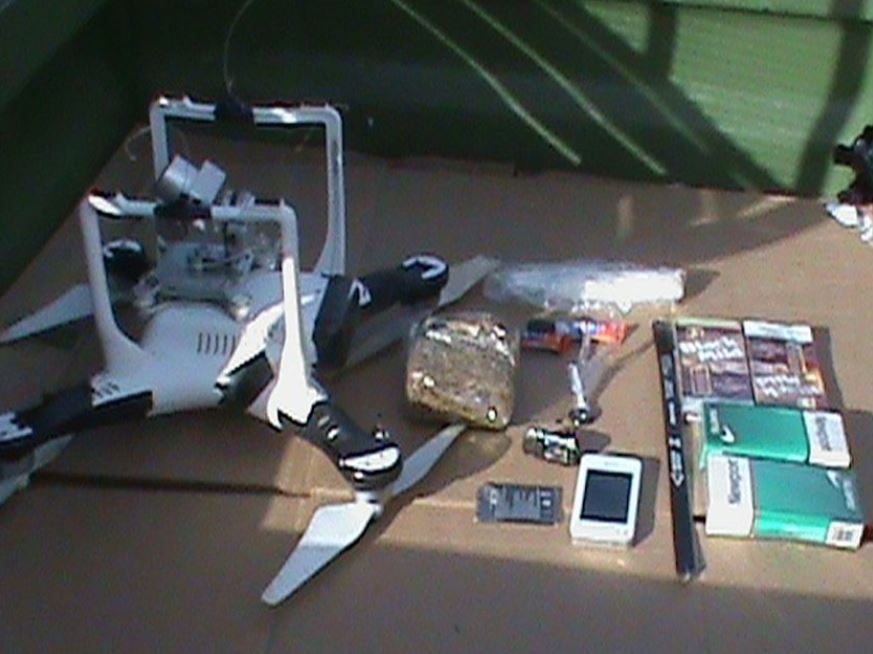
Drone caught carrying contraband into a prison
Safety and security are the foundation on which prison operations must be built. Prisons are complex systems than need all parts to work together to operate successfully. Achieving safety and security requires balancing physical facilities, technology, and operations.
Unmanned aircraft systems (UAS), or drones, exposes a prison’s security gap and leaves prisons vulnerable to risks. Drones contribute to the threat of “introduction of contraband” and can aid in inmate escapes. The consequences of these threats endangers the entire correctional facility (staff, inmates) and compromises public safety.
During this step, consider these kinds of questions: “why?, what?, when?, where?, how?”
Brainstorm with different departments and stakeholders to gather a comprehensive view of drone risks. Discuss the types of questions above in your brainstorming session.
Use these questions to think about event-based scenarios that could happen at your facility. Then establish which areas of your organization would be affected and the consequences of the event. Risk identification involves establishing three key concerns: sources of risk, areas of impact, and consequences.
Sources of UAS threats disrupting prisons mainly come from someone wanting to smuggle contraband into the prison or surveil the perimeters. These deliveries have to be somewhat coordinated with an inmate on the inside; sources could include: friends, family, accomplices, or organized crime outfits.
Areas of Impact will differ depending on your industry or type of business. Areas of impact to consider include: Human welfare (inmate/employee), Operations, Financial, Legal, Public Relations, Public Safety.
Contraband being delivered via drone:
All of these items come with their own possible set of consequences, all leading to less than ideal prison situations. The drone delivery of a contraband package sparked a prison brawl in a Ohio state prison yard. No matter how it arrived, the “introduction of contraband” into a prison leads to negative outcomes, such as inmate misconduct, prison riots, increased drug use, serious injury to guard or inmates, etc.
Every prison population is different and when evaluating if a prison has a contraband problem, another factor to consider is the types of prisoners at the correctional facility.
When inmates enter prisons, they are classified by internal/external risks and needs. If a prison has a large number of “high risk” inmates, that could make the prison more susceptible to contraband, violence, escape attempts, etc.
Cell phones
Cell phones have become a big problem for correctional facilities. They allow inmates to conduct criminal activities from within the prison walls. They can allow inmates to coordinate future contraband deliveries and possible escapes with outside accomplices. The communication devices also give criminals a means to retaliate against victims, witnesses, prosecutors, and other government employees.
The Federal Bureau of Prisons confiscated 5,116 cell phones from its facilities in 2016. Based on data available for the first six months of 2017, the agency projected that the number of confiscations would jump by 28 percent in 2017.
The number is expected to be even worse for state and local prisons. By the end of 2016, the Georgia Department of Correction seized 22,326 cell phones from prisoners and visitors. South Carolina prisons confiscated over 7,200 cell phones in 2016.. The Tennessee Department of Correction seized more than 2,000 cell phones in 2016.
Prisoner use of contraband wireless devices continues to be a serious threat to the safety of correctional staff, other inmates, and the general public.
Resources:
https://apps.fcc.gov/edocs_public/attachmatch/DOC-343732A1.pdf
Drugs
Drugs have continued to be an issue for prisons. More criminals are entering prisons with drug habits and dependencies; these habits don’t change once inside. Drugs lead to an increase in violence, misconduct, and mortality rates due to overdose or suicide.
Recent studies suggest there has been a rise in inmate deaths due to drugs and an aging population in prison. These trends mirror the general public which has also seen a significant increase in drug-related deaths due to rising use of opioids. As well as an increase in the number of seniors in the population.
Resources:
Mortality in Correctional Institutions (MCI)
https://www.bjs.gov/content/pub/pdf/msp0114st.pdf
Weapons
Weapons in the hands of inmates is a worst-case scenario. Drones have the capability to carry the weight of a handgun, and there have been many documented cases of drones dropping knives, blades, hacksaws into prison yards. Drones can be modified with a remote drop/release function, making deliveries faster and easier.
Having a weapon get into the hands of a prisoner could be a nightmare scenario, inmates could use the weapon against guards or other inmates. The type of event could spiral out of control and compromise the safety of the institution quickly.
Should the prison be worried about drone flyovers?
Drones could be flying over to gather surveillance information about perimeter security, physical layout, and guard patterns for future contraband delivery.
Could a drone be used to aid in an inmate’s escape?
In one event in South Carolina, an inmate in a maximum security prison coordinated a drone drop, giving him access to wire cutters which he used to escape. Days later, authorities apprehended him near Austin, Texas.
What is a drone’s payload capacity? How much weight can they carry?
Drones can carrying varying payloads depending on their size and weight. Basically the higher power-to-weight ratio your drone has, the greater a payload it can carry. Drones can be modified with a payload release system, which enables the pilot to drop a single payload while in flight. The charts below highlight the most popular rotocraft and fixed wing types of UAVs which their respective specs.
|
Rotocraft UAV Types |
||
|
Small Quadcopter |
Medium Quadcopter |
Large Octocopter |
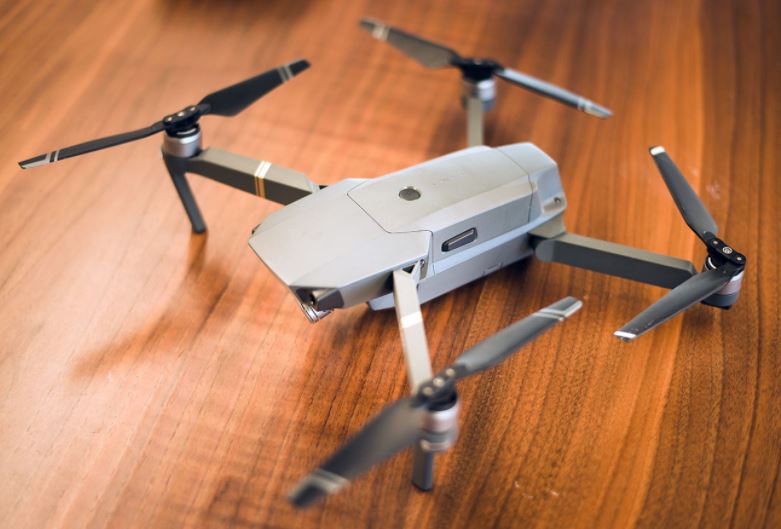 |
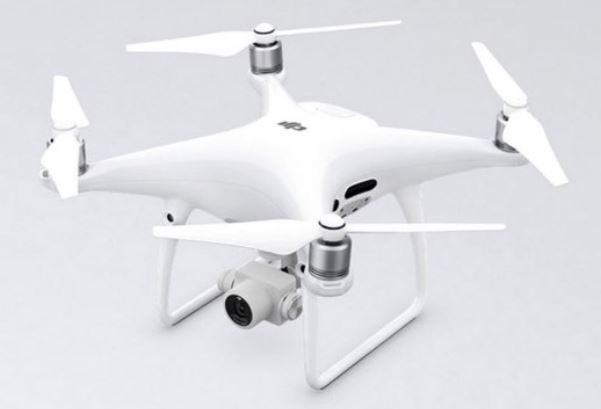 |
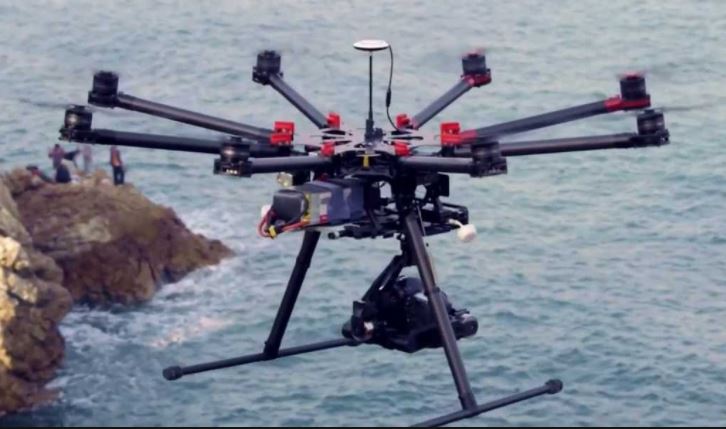 |
|
Range: 15-20 miles Endurance: 25-30 mins Payload: <5lbs Price: $1000 |
Range: 10-15 miles Endurance: 30-45 mins Payload: 10 lbs Price: $1250 |
Range: 5-8 miles Endurance: 20-30 mins Payload: 40-50 lbs Price: $3000 |
|
Fixed Wing UAV Types |
||
|
Small |
Medium |
Large |
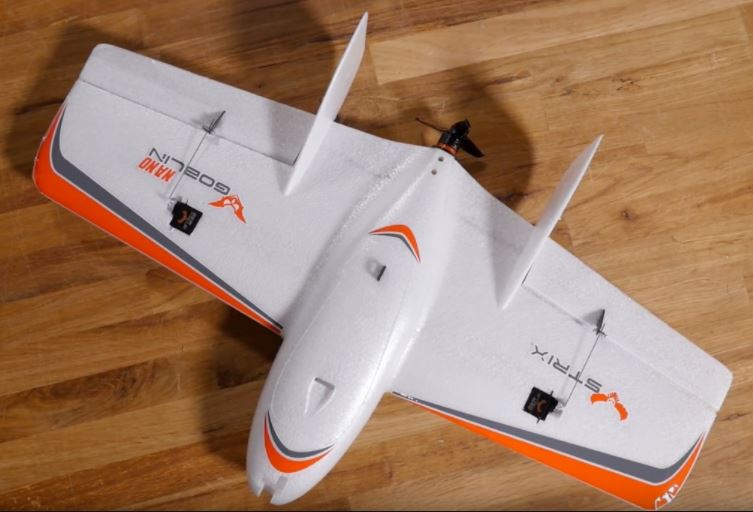 |
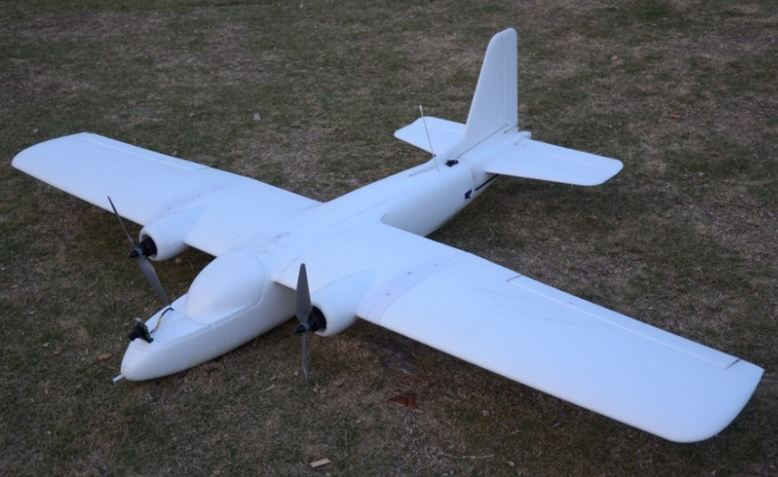 |
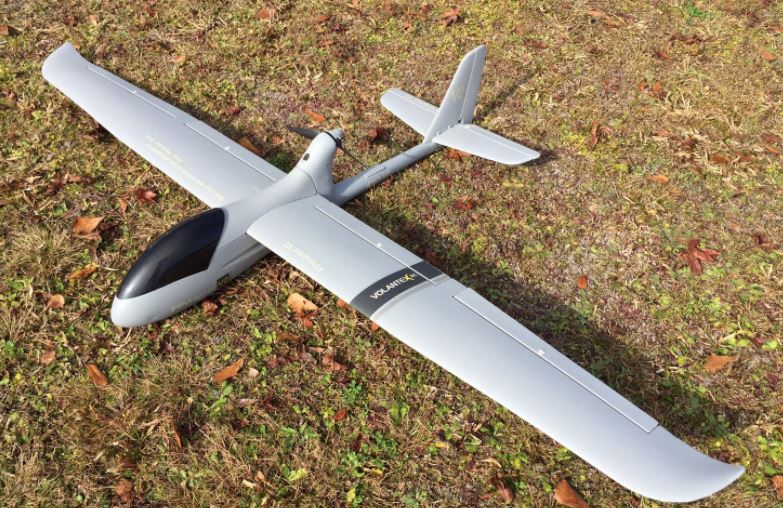 |
|
Range: 60-80 miles Endurance: 40-50 mins Payload: Less than 5lbs Price: $500 |
Range: 80-110 miles Endurance: 50 mins - 1.5 hrs Payload: 10-25 lbs Price: $1250 |
Range: 60-100 miles Endurance: 50 mins - 1.5 hrs Payload: 20-30 lbs Price: $2200 |
The next step is to identify the level of risk. The level of risk can best be understood as the probability of the event occurring and the product of the consequence of an event: Risk = Probability x Consequence.
Level of Risk = Probability x Consequence
The assessment of probability and consequence is somewhat subjective but subjectivity can be lessened by using data or facts collected from a range of available internal and external information.
When determining the likelihood of an event or risk, it can seem difficult to have a precise frequency. For instance, you may want to determine the number of drones operating near or above your correctional facility. First, you can ask personnel of all levels to report drone sighting and keep records of the events. This may not give you an exact number but can indicate if there is a problem, or if it's a growing concern.
A more precise solution to determining the frequency of drone sightings is to monitor drones with drone detection technology. Reputable companies will allow you to try out or rent drone detection equipment for a trial period (30-day or 60-day trial), this will give the most accurate numbers to access the actual probability.
Probability Scale
|
Level |
Probability |
Description |
|
4 |
Very likely (frequent) |
Has occurred 2-3 times in the past year |
|
3 |
Likely (probable) |
Occurred more than 4-5 times over 5 years in this organization or in other similar organizations; is known to have occurred in the past year |
|
2 |
Unlikely (uncommon) |
Has occurred 2 or 3 times over 10 years in this organization or similar organizations |
|
1 |
Very unlikely (rare) |
Has never happened in this industry |
Consequences will range from marginal/slight inconveniences to major/catastrophes. Determine how the events will impact different areas of your organization: will they affect human life, daily operations, information and technology, financial, etc.
Consequence Scale
Level |
Consequence |
Areas of Impact |
||
|
Health |
Operations |
Public Safety/ Community Relations |
||
|
4 |
Severe |
Death of guard or inmate; Multiple injuries |
Rampant drug use/ misconduct/ prison riots/ lockdowns; Frequent disruptions |
Public safety at risk; media attacks on prison; Civil liabilities |
|
3 |
High |
Severe injury of guard(s) or inmate(s); Needs medical attention |
Increase in drug use, misconduct; occasional lockdowns that disrupt operations |
Public safety compromised; unfavorable outlook among community |
|
2 |
Moderate |
Minor injury may need medical attention; non life-threatening injury to guard or inmates |
Misconduct leading to partial lockdowns and headcounts; minor disruptions |
Very minor public safety risk; little public relations needed |
|
1 |
Low |
Very inconsequential injury to guard or inmate; no medical attention needed |
Occasional incident that is requires little disruption to operations |
No risk to public safety; No PR campaigns needed |
Note: The scales above use 4 different levels; however, you can use as many levels as you need. Also use descriptors that suit your purpose (e.g. you might measure consequences in terms of dollar value, information loss, time loss).
Once the level of risk is established, you can analyze the risk and identify solutions. Risk mitigation involves determining what the acceptable and unacceptable risk levels are for your organization. It also involves identifying solutions or ways to treat the risks. Unacceptable risks range in severity; some risks will require immediate solutions while others can be monitored and treated later.
For example, you may decide the probability of a drone delivering a cellphone a problem inmate is 'likely' (a score of 3) and the consequences are 'high' (a score of 3). Using the tables and formula above, a “drone delivering cellphone to high-risk inmates” has a risk rating of 9 (i.e. 3 x 3 = 9).
Risk Rating Table
|
Risk rating |
Description |
Action |
|
12-16 |
Severe |
Needs immediate corrective action |
|
8-12 |
High |
Needs corrective action within 1 month; monitor risk and re-evaluate at a later date |
|
4-8 |
Moderate |
Needs corrective action within 3 months; monitor risk and re-evaluate at a later date |
|
1-4 |
Low |
Does not currently require corrective action; monitor risk |
Risks can be managed by one of four distinct methods: risk acceptance, risk avoidance, risk control (or reduction), and risk transfer (deflection).
| Strategy |
Definition |
|
Risk Acceptance |
An explicit or implicit decision not to take an action that would affect a particular risk. |
|
Risk Avoidance |
A strategy or measure which effectively removes the exposure of an organization to a risk. |
|
Risk Control (or reduction) |
Deliberate actions taken to reduce a risk’s potential for harm or maintain the risk at an acceptable level. |
|
Risk Transfer (or deflection) |
Shifting some or all of the risk to another entity, asset, system, network, or geographic areas. |
Source: Homeland Security: Risk Management Fundamentals (page 23)
It is up to wardens and stakeholders to determine what risk is acceptable and unacceptable. Severe risks that cause a high degree of loss and occur frequently should be avoided at all costs. Minor risks with a low degree of loss may be acceptable. Not all the risk strategies may apply your facility, discuss the best course of actions for your organization with your entire team.
Regarding drone risk, you accept the risks of a drone delivering contraband, surveilling the prison yard for blind spots/security deficiencies and the consequences which could impact human welfare, employee safety, public safety, and legal liability.
How might you remove your facility from exposure to drones? It is almost impossible to remove a prison from aerial threats completely. Possibly nets. Nets may prevent some contraband from entering prison walls but they still expose the prison to the aerial threat of drones.
Prison wardens and supervisors can reduce risk through staff training, preventative maintenance, and development of a risk management plan as the standard operating procedure. Communicate with all levels of employees the risk, from maintenance workers to high-level managers; everyone needs to be aware of the dangers. If a guard or officer sees a drone while on patrol, they need a procedure on who to tell; they need to be able to talk to those in the chain of command to report the incident.
Prison wardens and decision makers may determine a more advanced solution is needed, a drone detection system can integrate into existing security protocols. As stated before, reputable companies will allow you to set up drone detection systems on a trial basis before investing in an expensive system you don't need yet.
A trial period will allow your team to conduct further assessments to analyze detect, delay, and response time accurately. System effectiveness depends on timely detection; drone detection systems will give you the maximum time from the moment of detection to response. This will allow you to interrupt the drone in play and intercept the payload successfully. It is always more preferable to prevent an escape, riot or drug dealing than to have to deal with its aftermath.
Sometimes stakeholders will want to transfer the risk to someone else who is willing to assume the risk. UAS risks and the threats of contraband and escapes are not a risk easily passed on to another party.
The seriousness of the risk and consequences posed by drones must not be dismissed or underestimated. Without constant monitoring, innovation, and front-end investment, these inherent struggles spiral into crises that can only be managed at an even higher cost. As UAS activities increase, agencies need to share information and gain awareness of and continuously reassess the threat.
.png?width=2030&height=497&name=Background%20(1).png) Airsight is a leading sUAV security software company that specializes in delivering sUAV Airspace Detection Solutions for Critical Infrastructures, Universities, Spectator Sports, Prisons, Events, and more. Our UAV security experts integrate projects of all scopes and sizes nationwide, through a top consultative approach, to deliver the best UAV turnkey detection solution to secure your airspace. Connect with us today to discover which on our drone detection packages works best for your environment.
Airsight is a leading sUAV security software company that specializes in delivering sUAV Airspace Detection Solutions for Critical Infrastructures, Universities, Spectator Sports, Prisons, Events, and more. Our UAV security experts integrate projects of all scopes and sizes nationwide, through a top consultative approach, to deliver the best UAV turnkey detection solution to secure your airspace. Connect with us today to discover which on our drone detection packages works best for your environment.
Dallas1202 Richardson Dr # 304 Dallas texas 75206